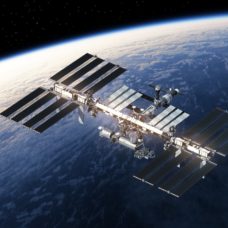The White House just released its proposed budget for the next fiscal year. While NASA‘s portion of the budget is still relatively large, the government wants the agency to cancel some of its science projects, including the WFIRST observatory.
One of the proposed budget documents states:
“The Budget proposes to terminate the WFIRST mission. Given delays and cost growth with the James Webb Space Telescope (JWST), the Administration is not ready to proceed with another multi-billion-dollar space telescope.”
This is not the Trump administration’s first attempt to ditch WFIRST. Last year, the White House budget proposal for the fiscal year 2019 sought for the cancellation of the observatory’s construction as well as other five science programs.
Fortunately, a Senate vote saved WFIRST, securing the funding for its construction and launch scheduled in 2025.
However, the Trump administration once again sought its termination, citing that NASA should focus on completing the delayed James Webb Space Telescope.
NASA’s aim for the James Webb Telescope is to replace the Hubble Space Telescope. WFIRST, meanwhile, will later accompany the JWST.
David Spergel, the co-chair of the WFIRST science team, said in a statement:
“WFIRST and JWST are highly complementary. JWST stares deeply at small regions of the sky and will give us detailed information about individual objects while WFIRST will map large regions of the sky.”
The WFIRST Observatory
WFIRST or the Wide-Field Infrared Survey Telescope is smaller than the JWST. However, it has a broader field of view, allowing it to see through infrared and visible light.
JWST’s mission will provide a more detailed perspective of the universe. NASA plans to observe distant events beyond the reach of the Hubble and other ground telescopes here on Earth.
The WFIRST observatory, however, will study elusive and invisible forces in space like dark matter and dark energy.
Simply put, the JWST is like a microscope while WFIRST is like a photographer’s wide-angle lens. Aside from its wide-field telescope, WFIRST will also carry an advanced coronagraph for taking detailed images of planets outside our Solar System.
Megan Donahue, AAS President, said:
“It’s also reasonable to note that not only will WFIRST help us answer very compelling science questions that are different from what we can answer with JWST, the risk and cost of WFIRST are considerably lower.
NASA could start building WFIRST tomorrow, for less money than the same mission would cost 5-10 years from now. There is no scientific or engineering reason for WFIRST to be delayed.”
Aside from WFIRST, other missions at risk include the Plankton, Aerosol, Cloud, Ocean Ecosystem (PACE) mission and the Climate Absolute Radiance and Refractivity Observatory (CLARREO) Pathfinder instrument.



















Comments (0)
Most Recent